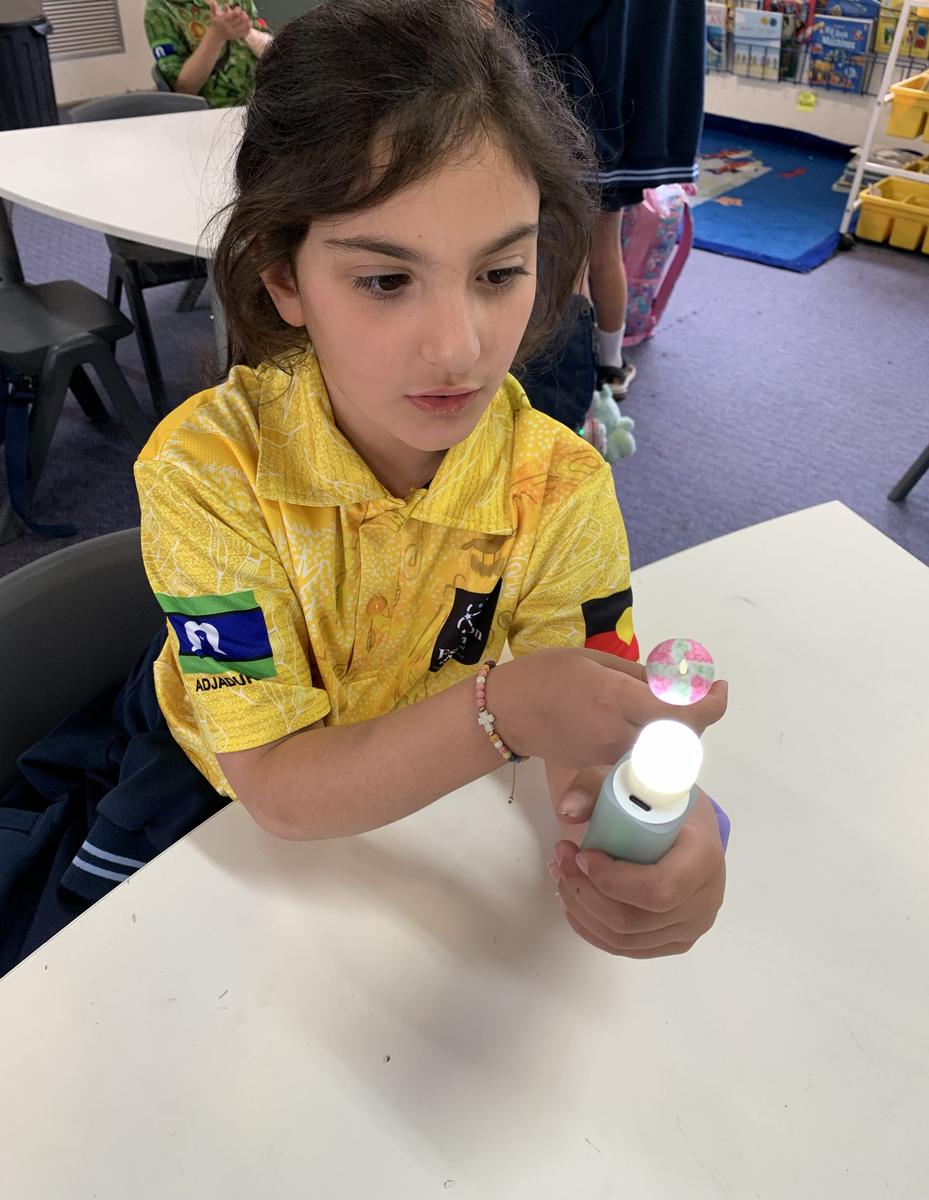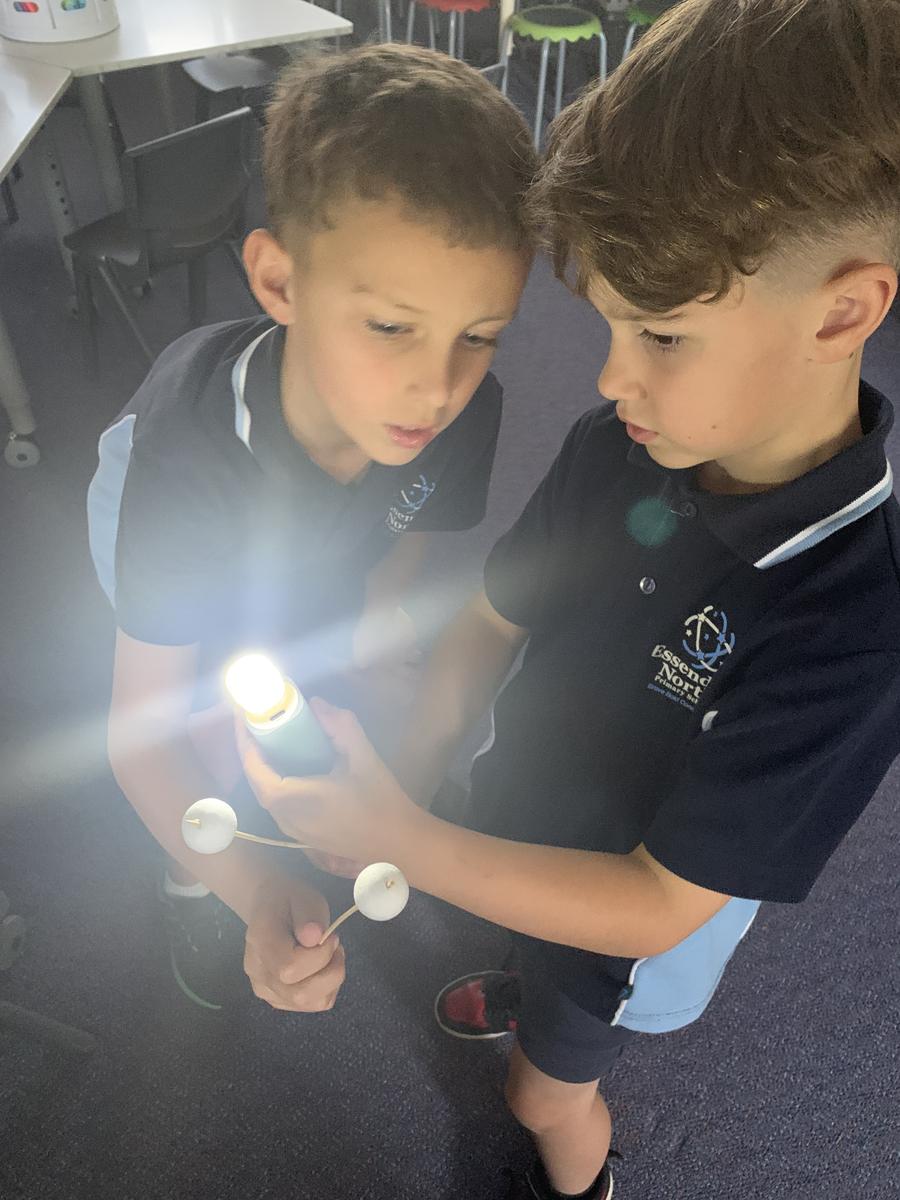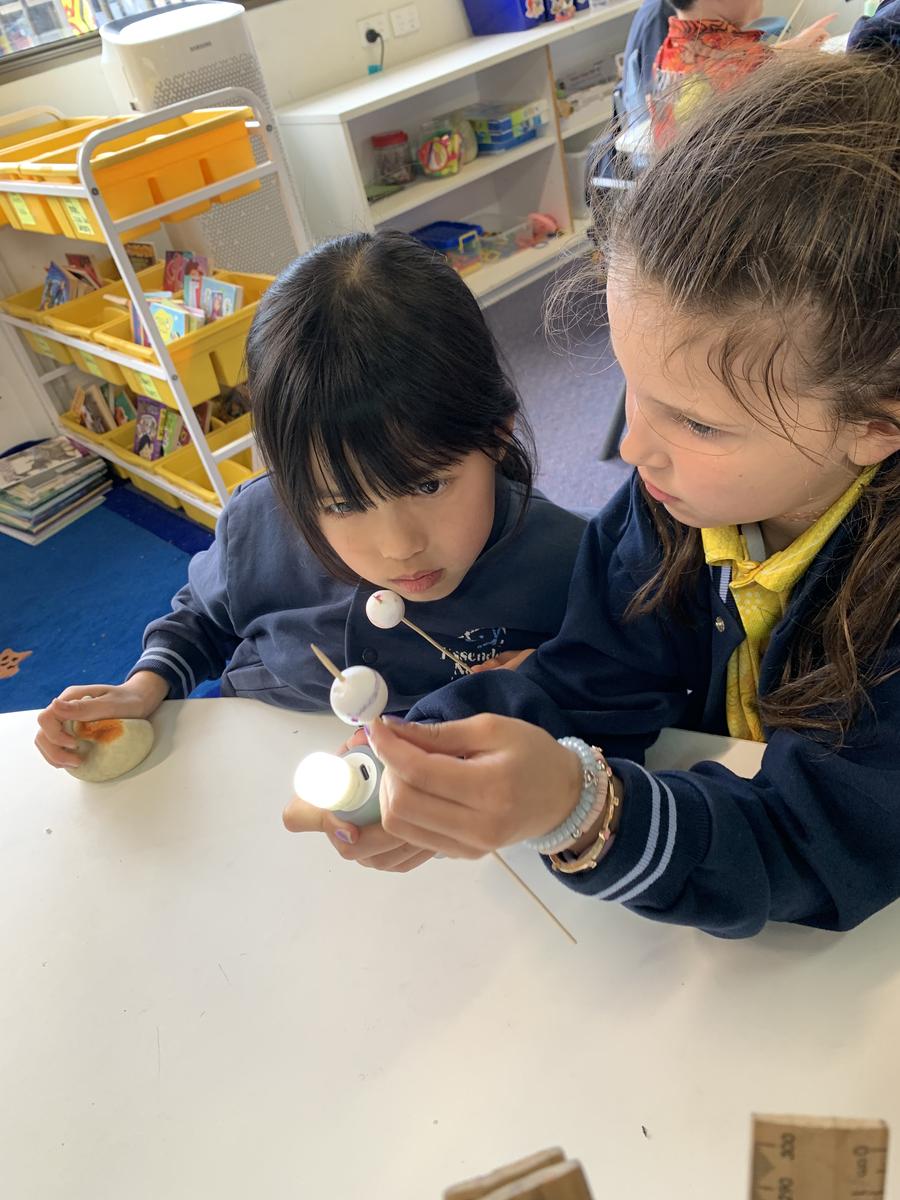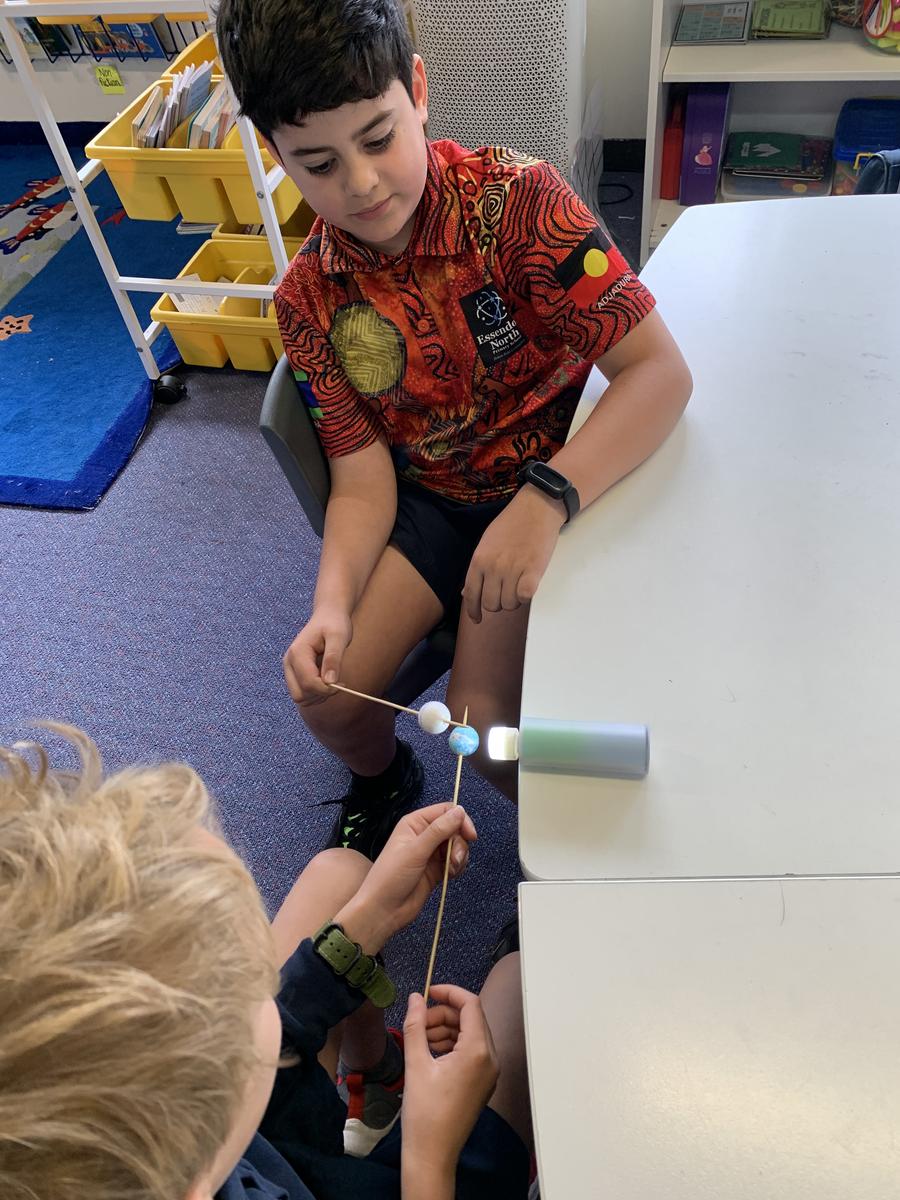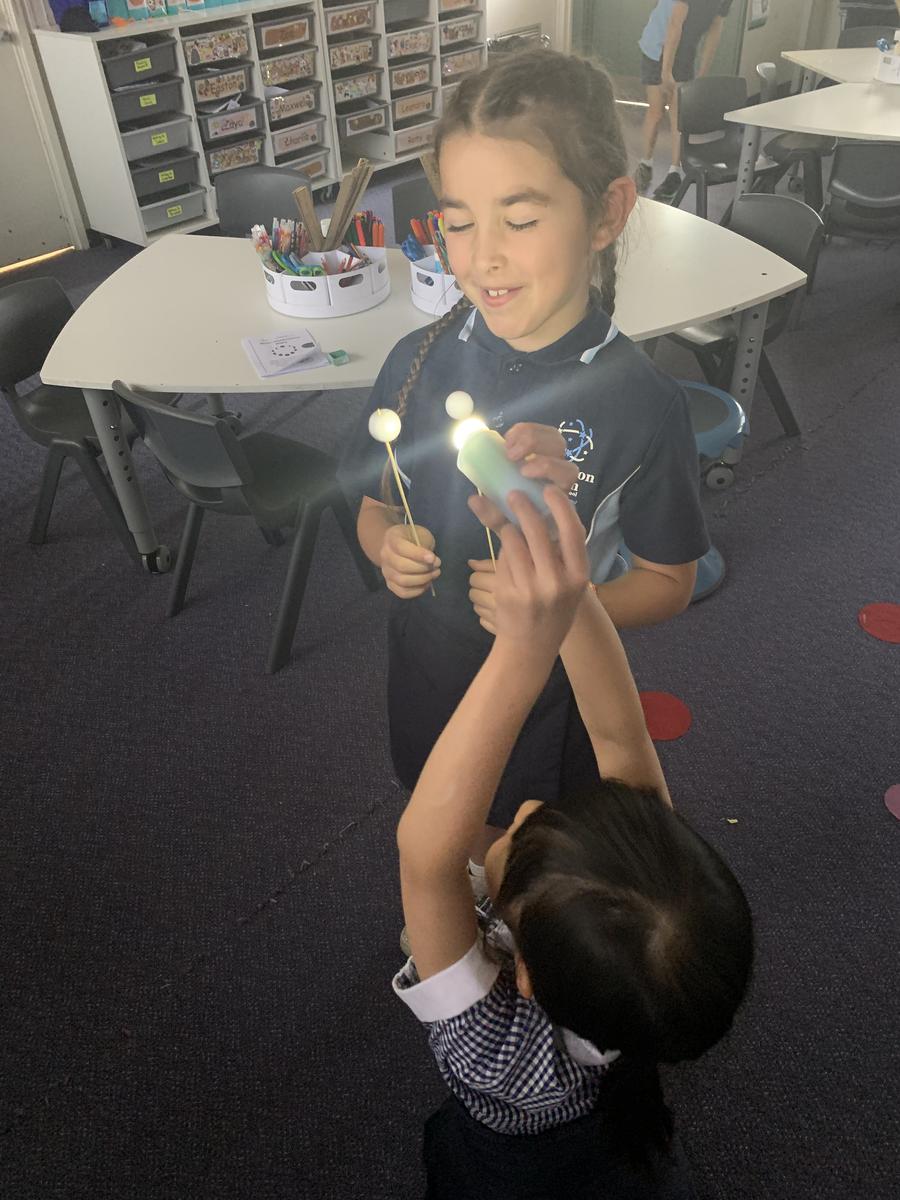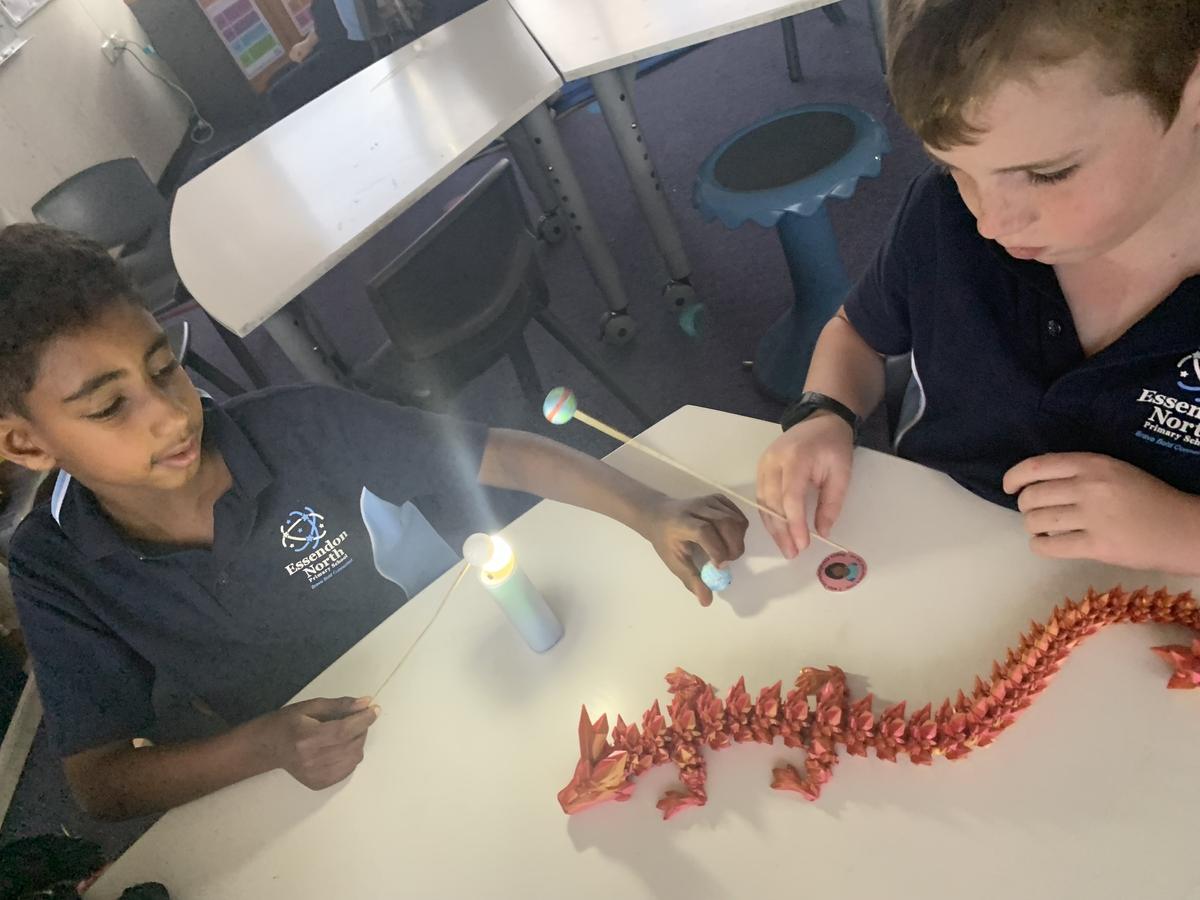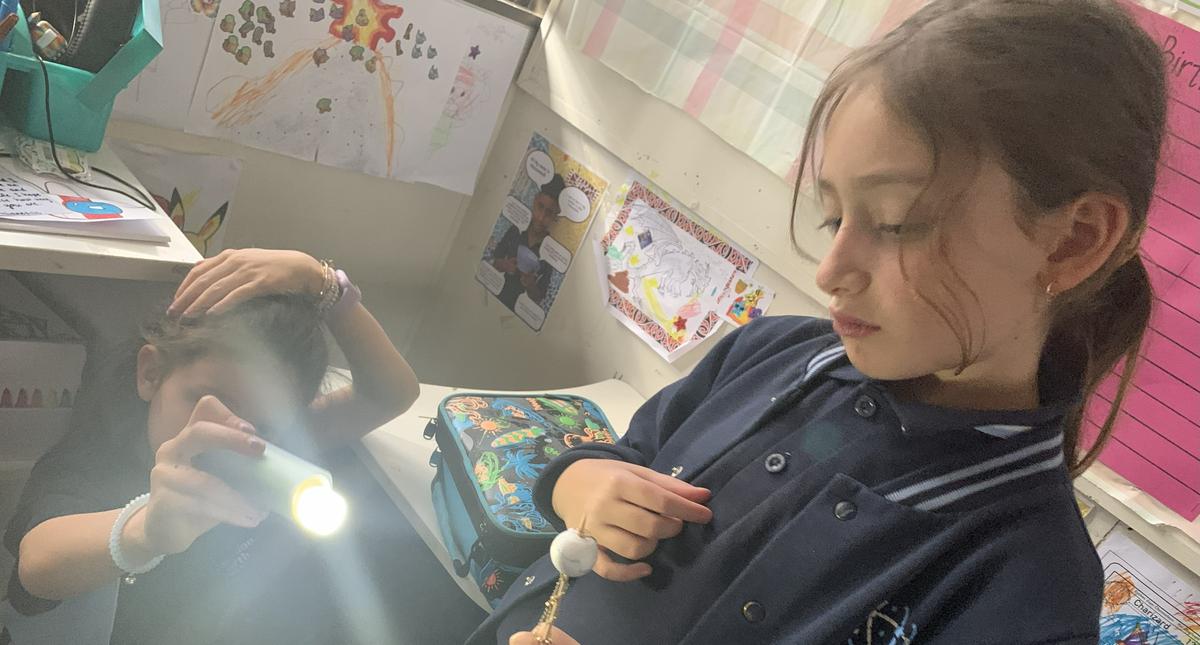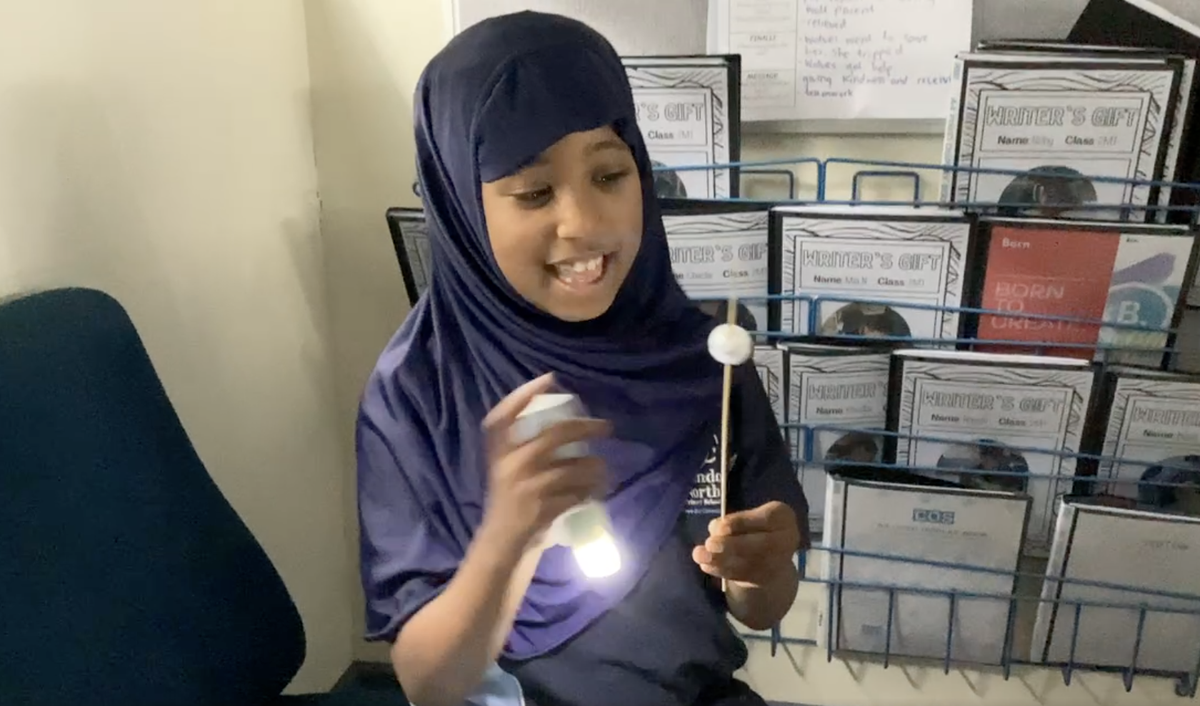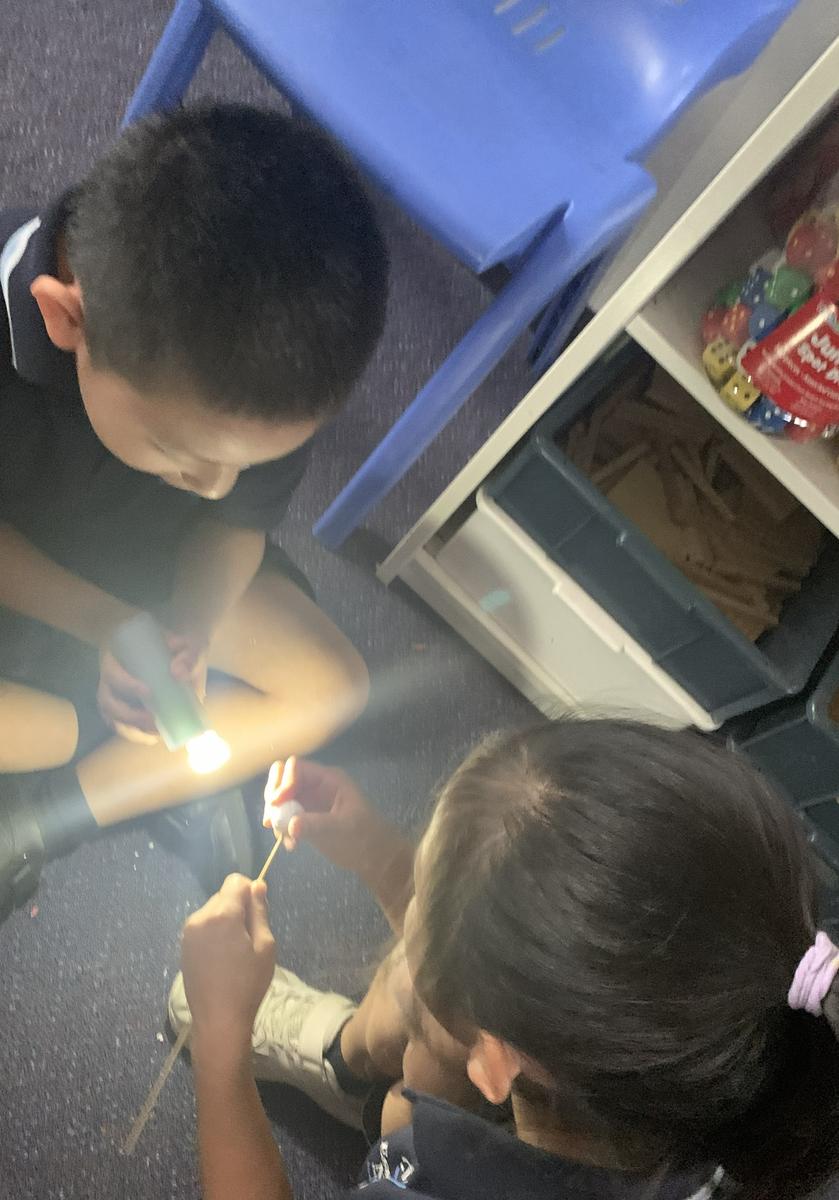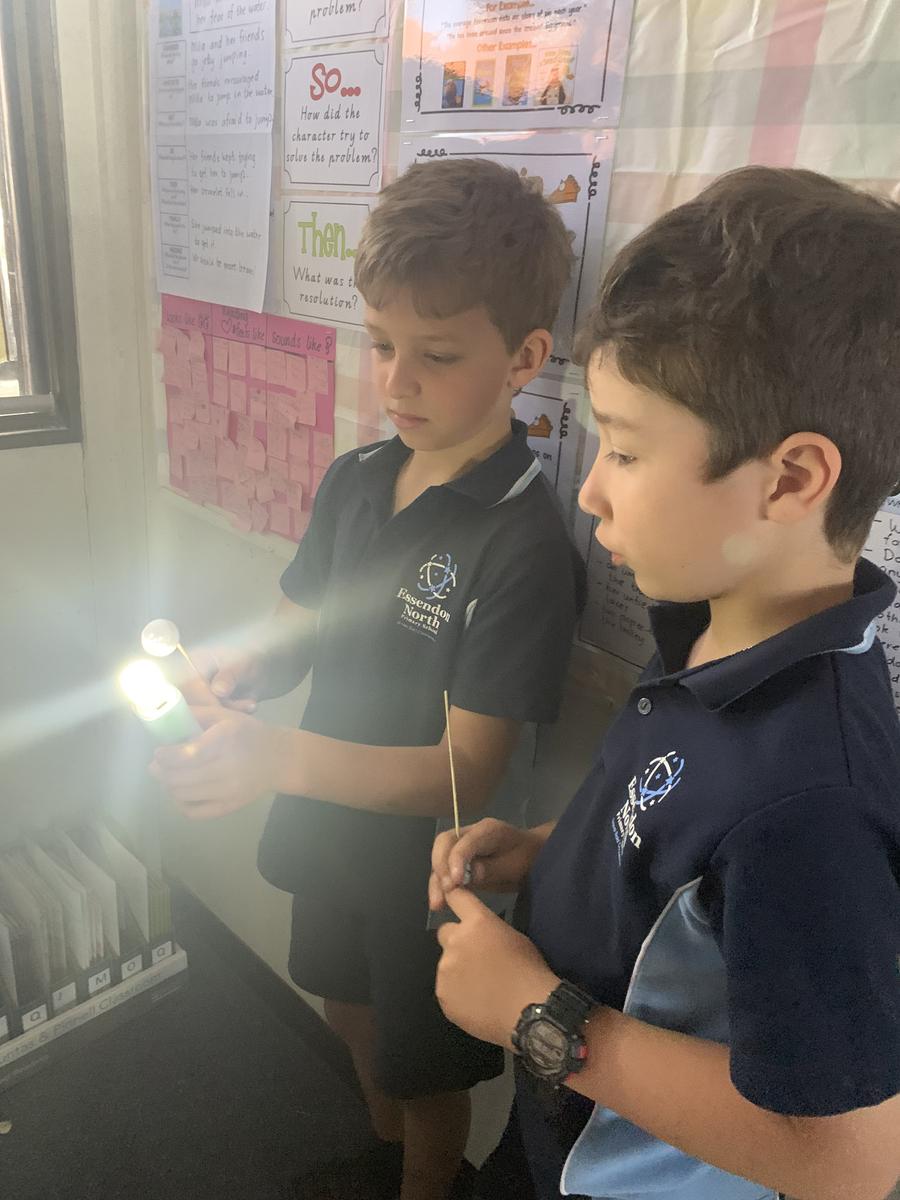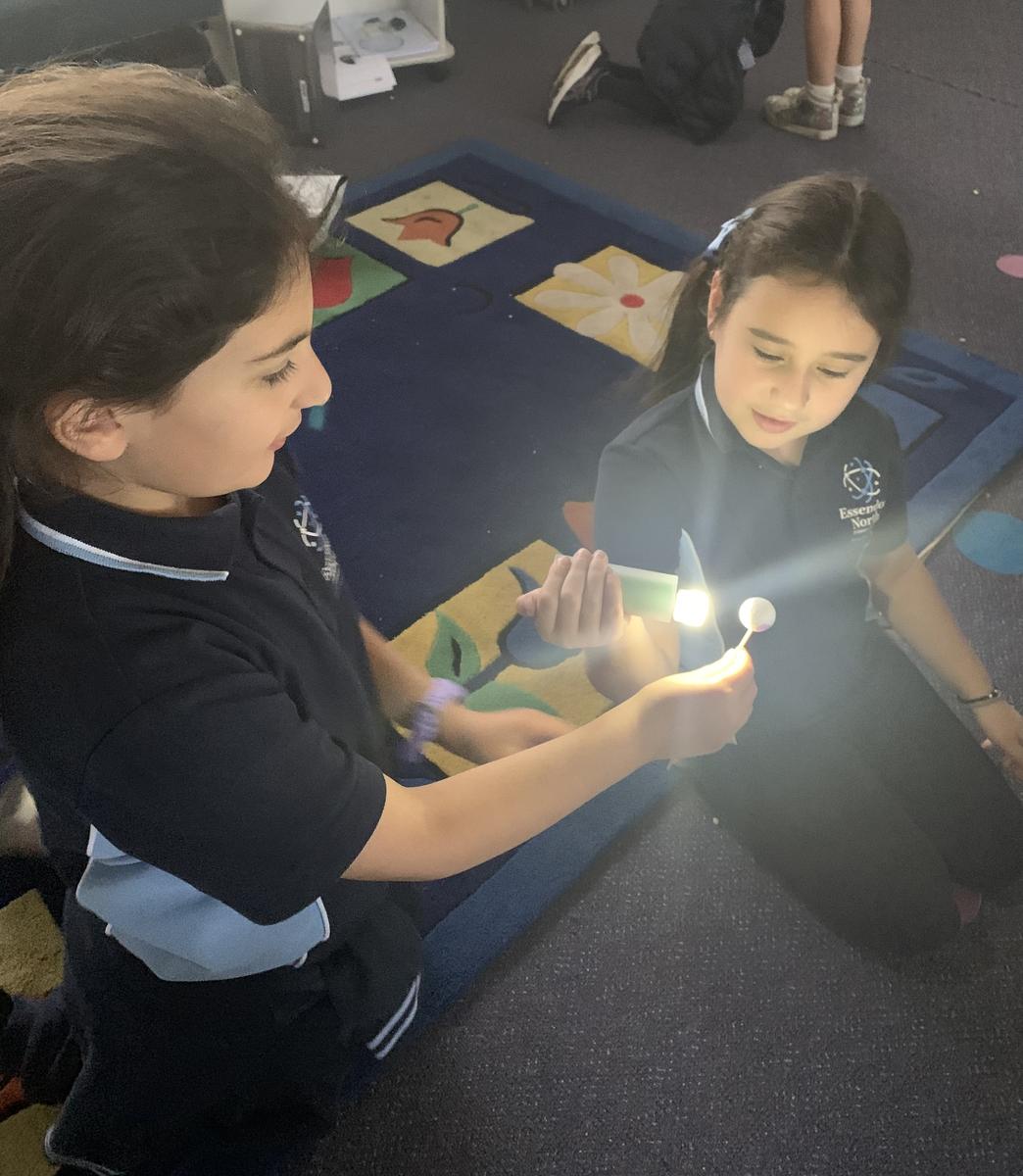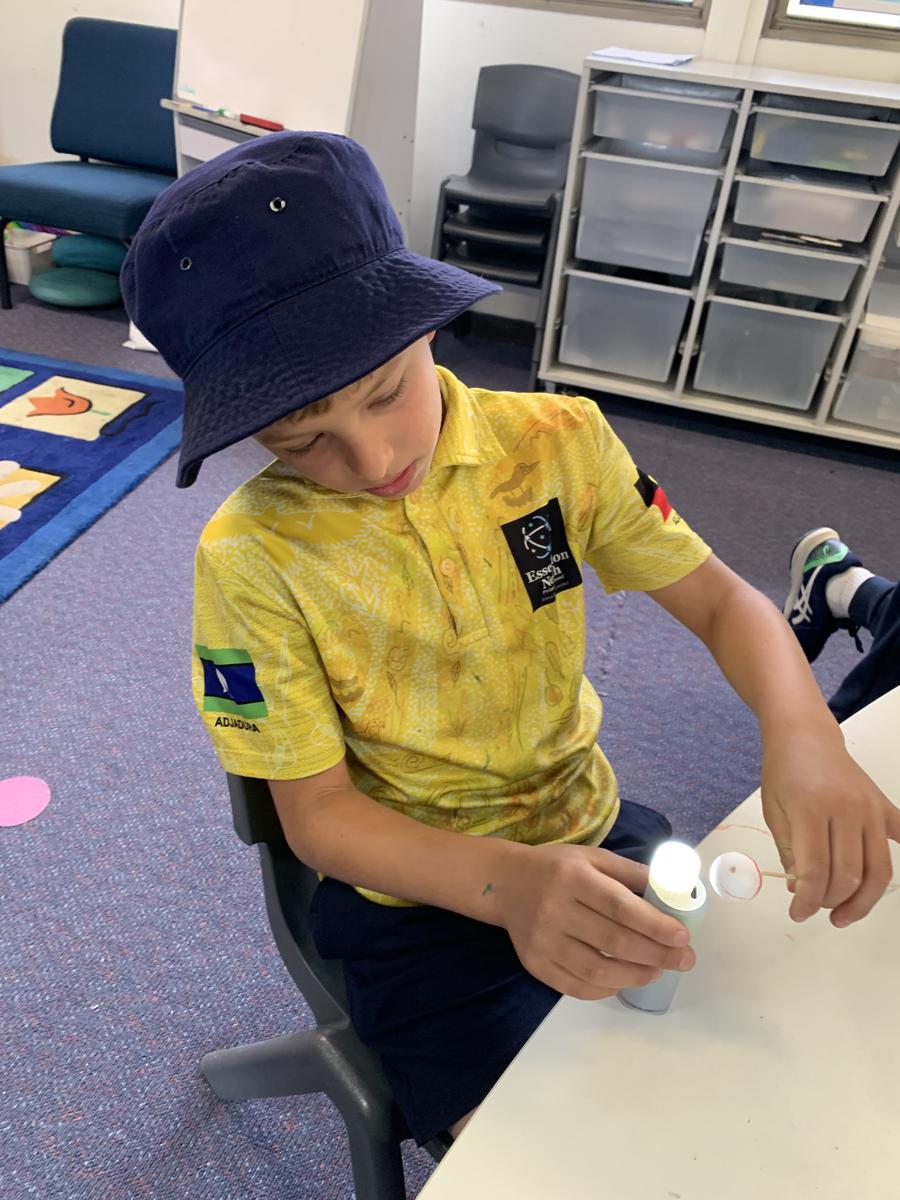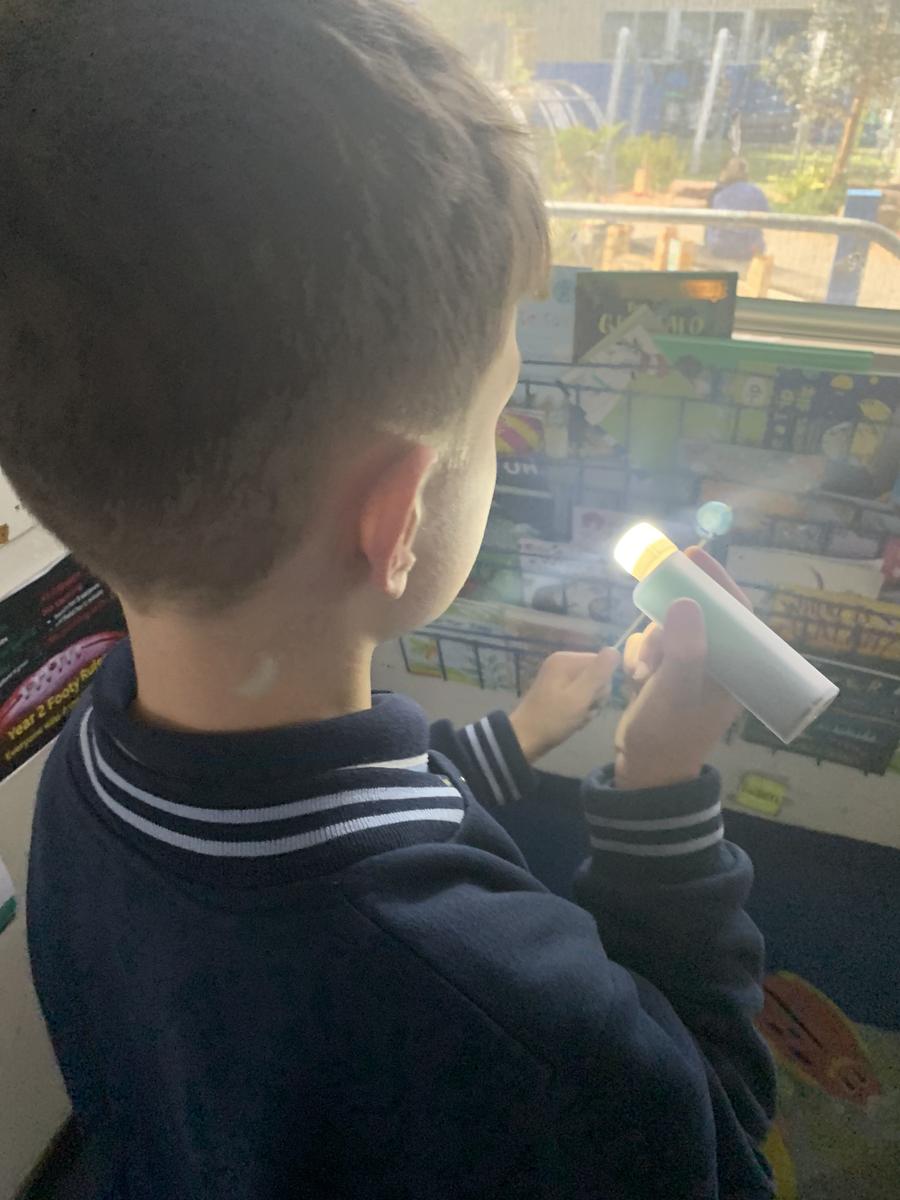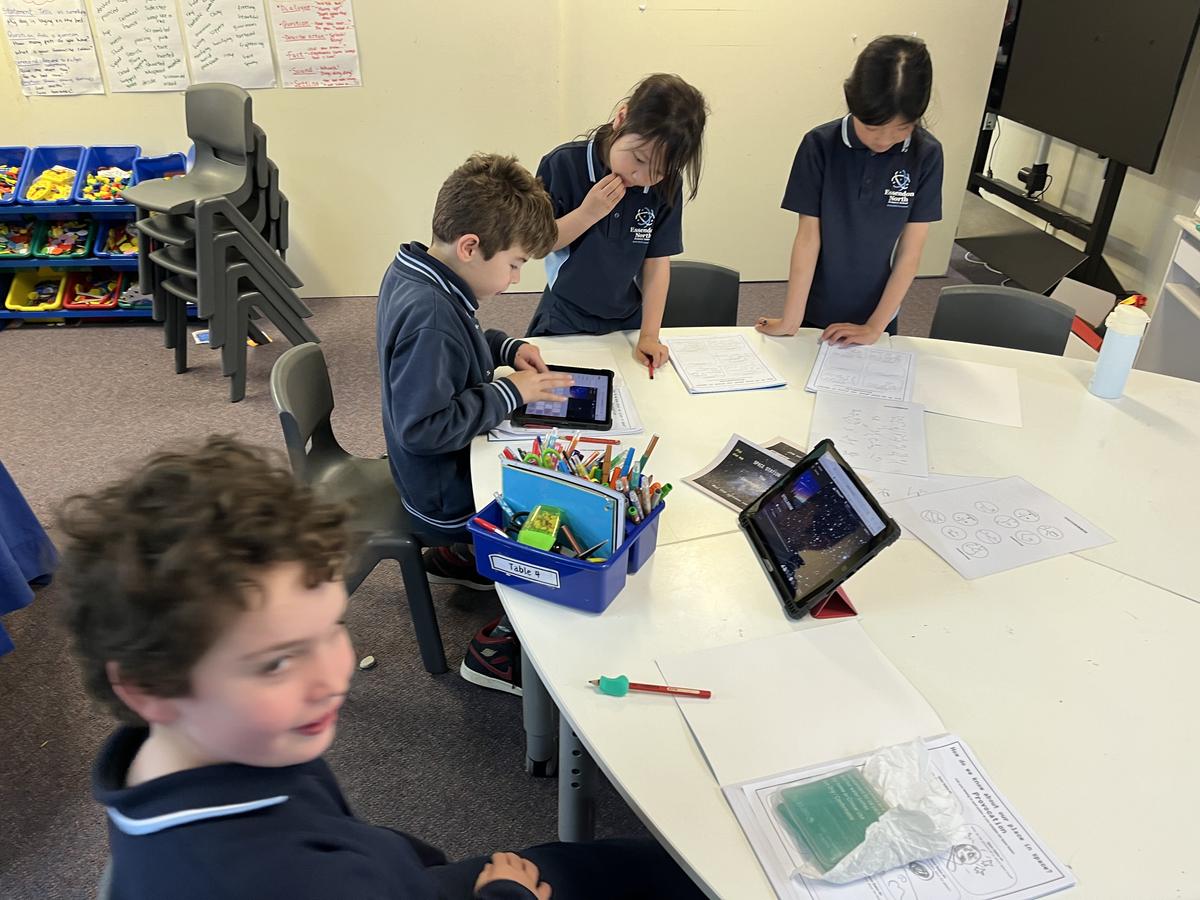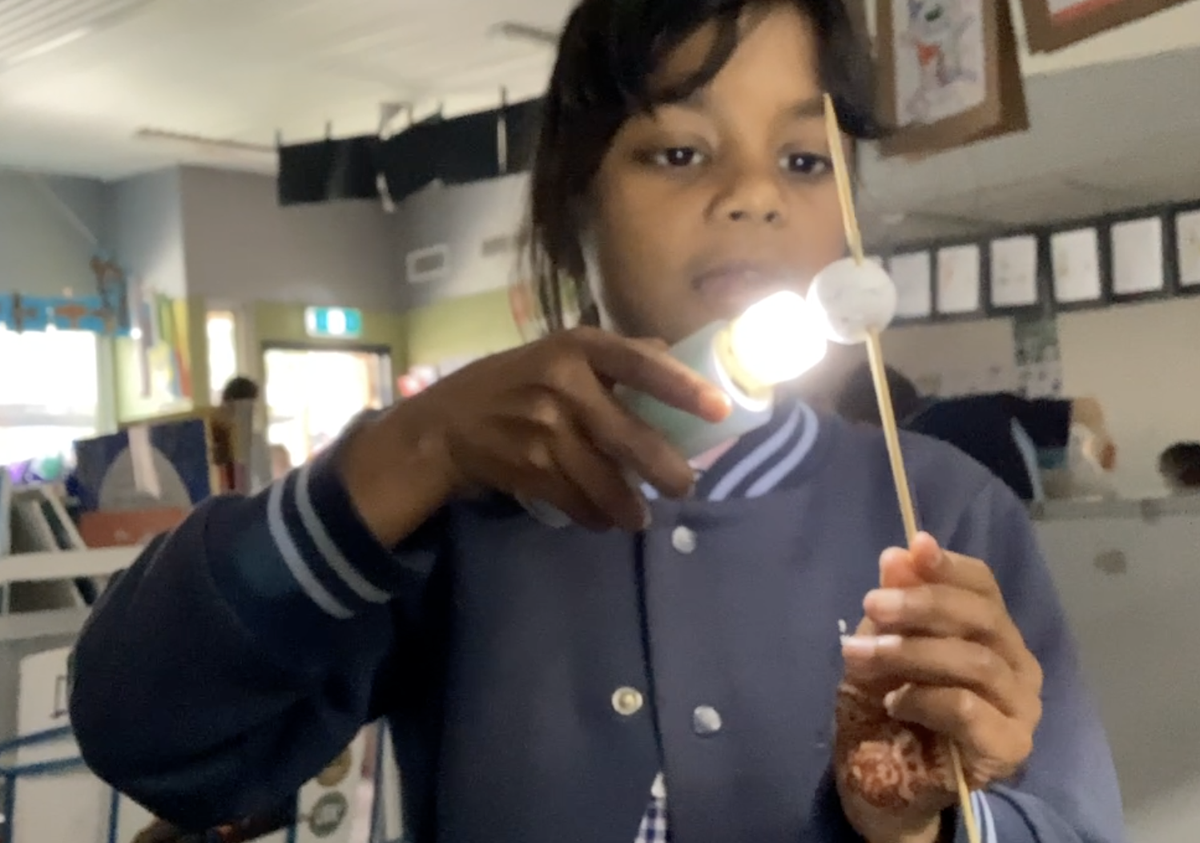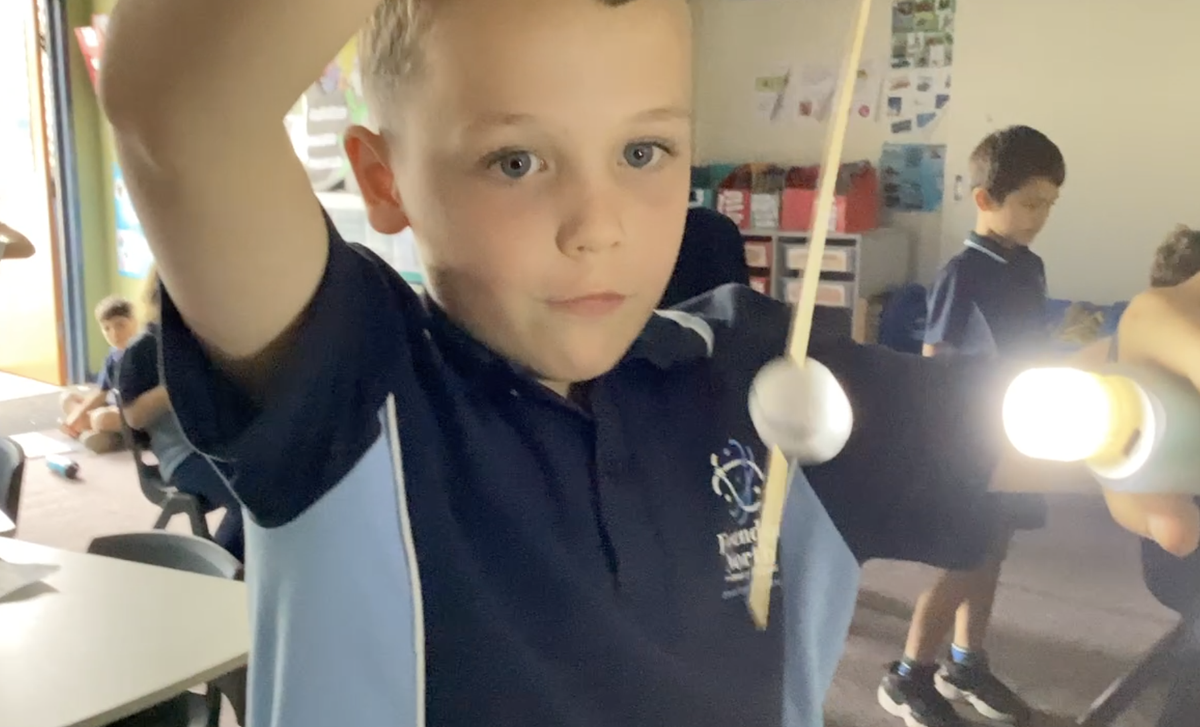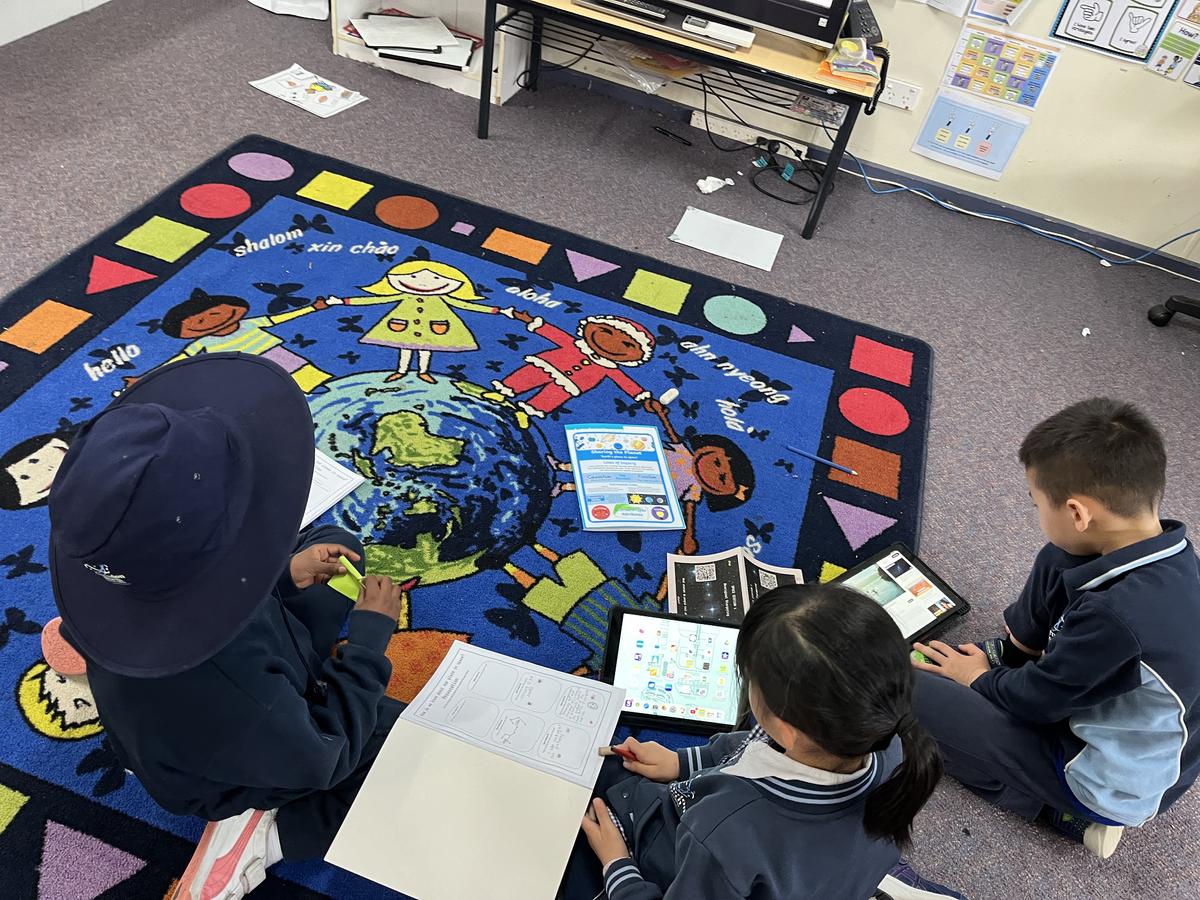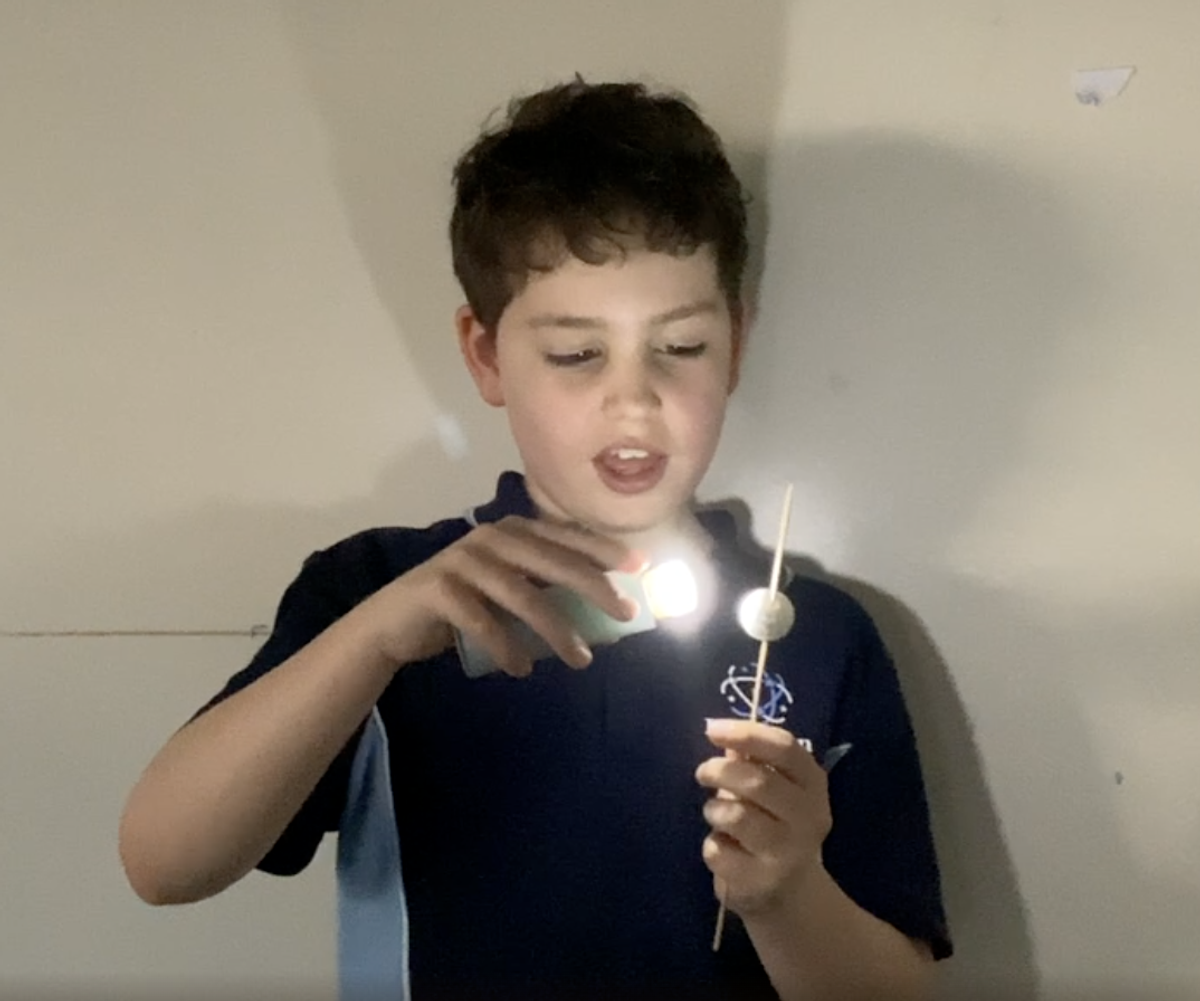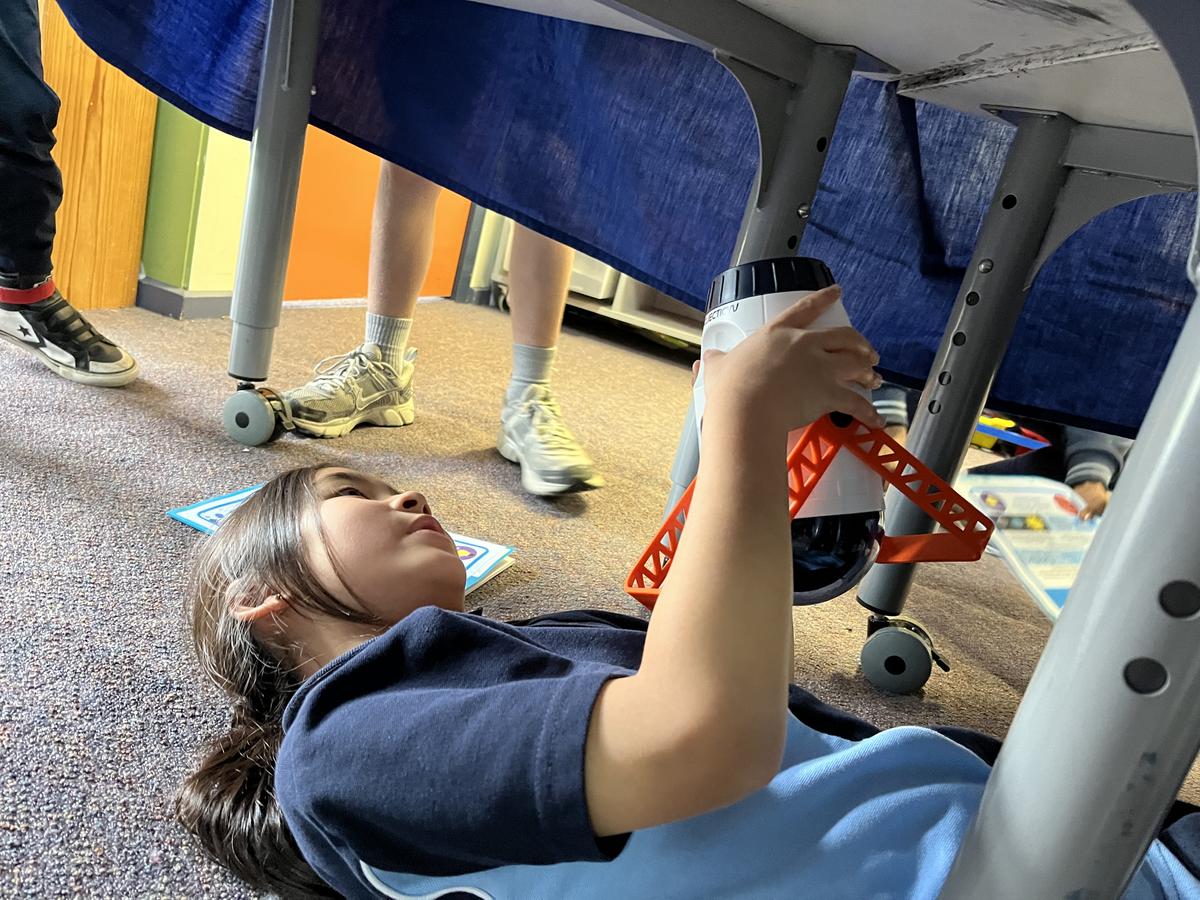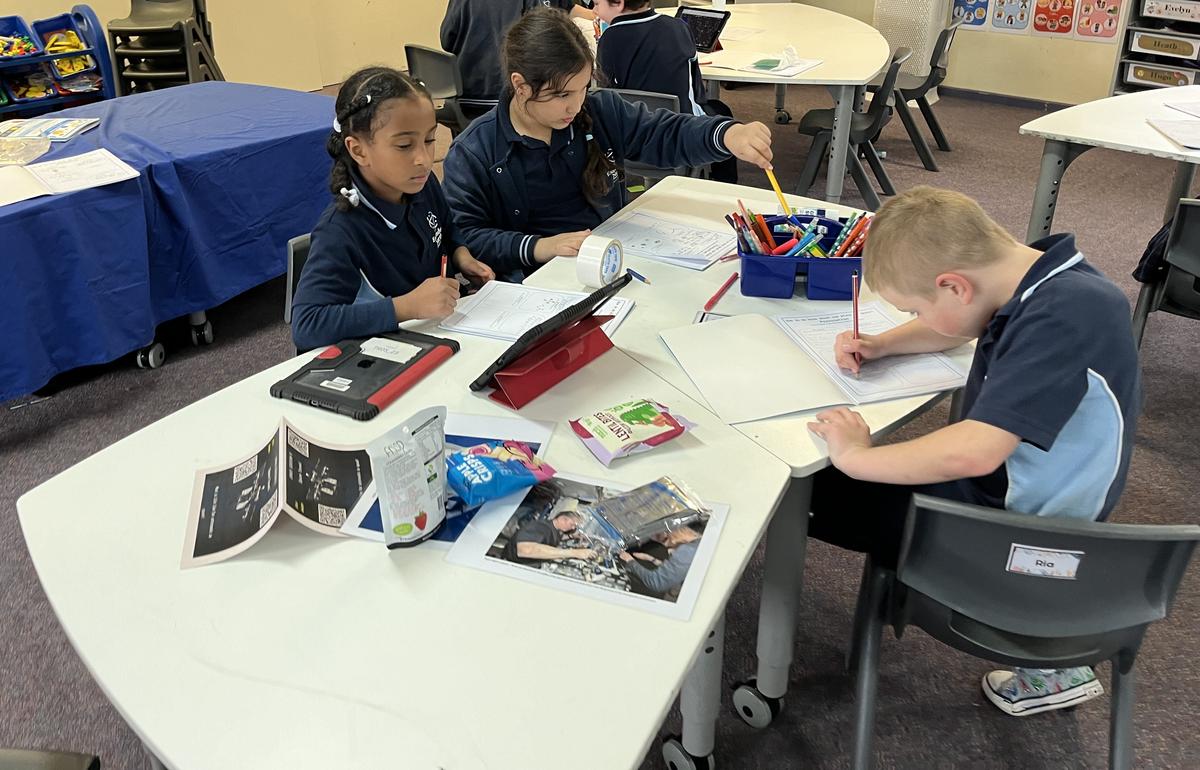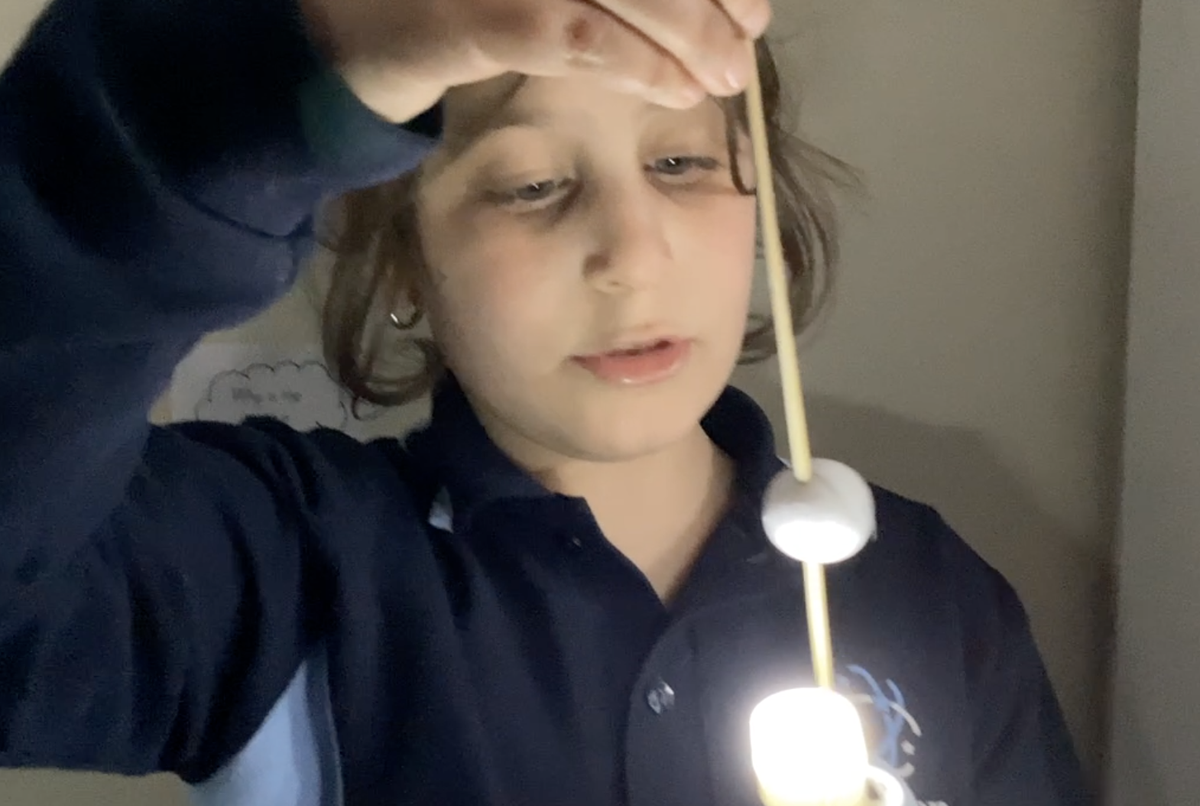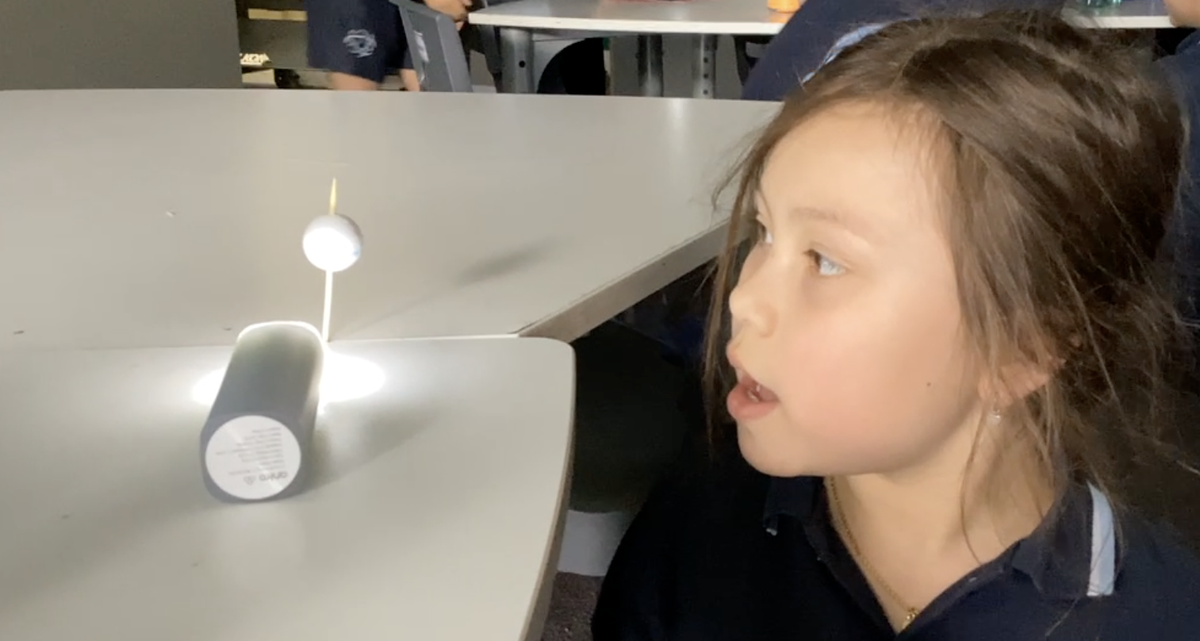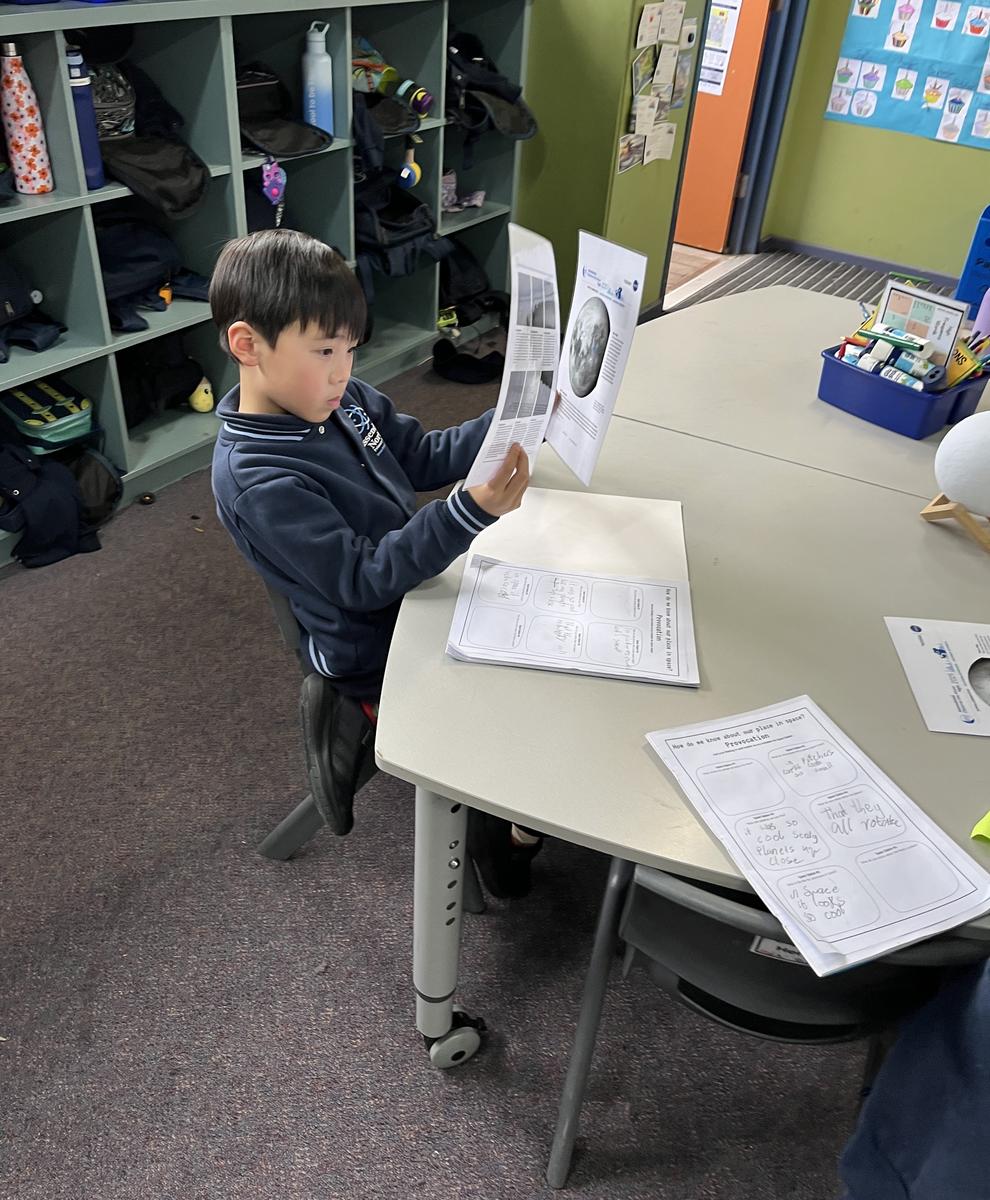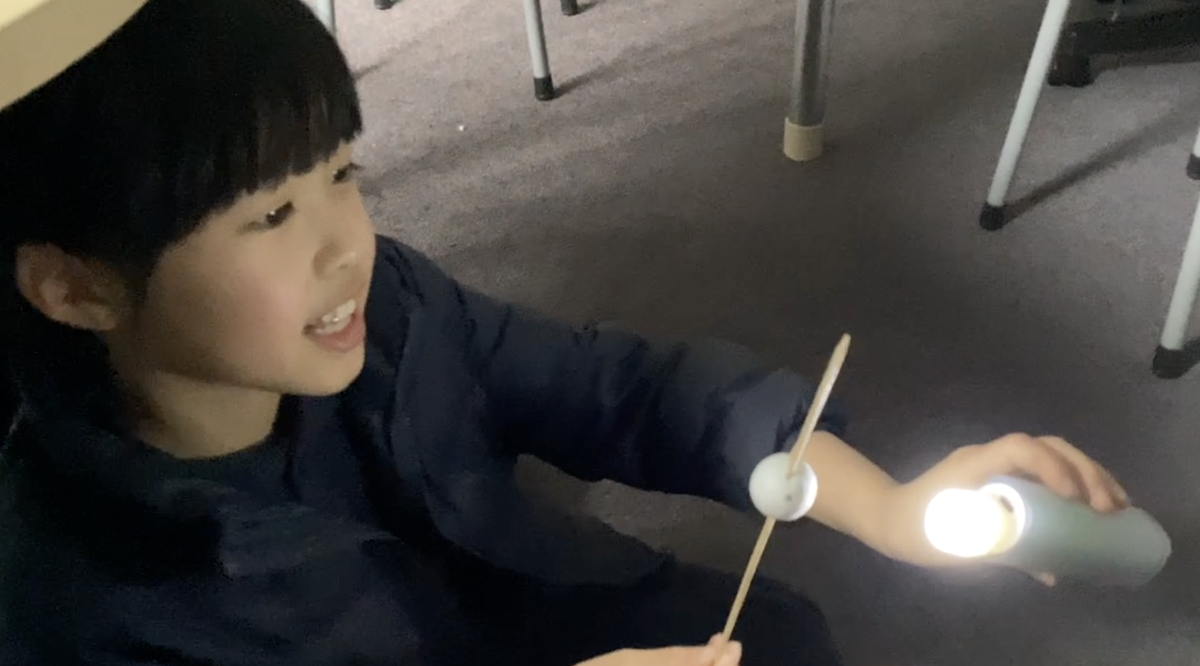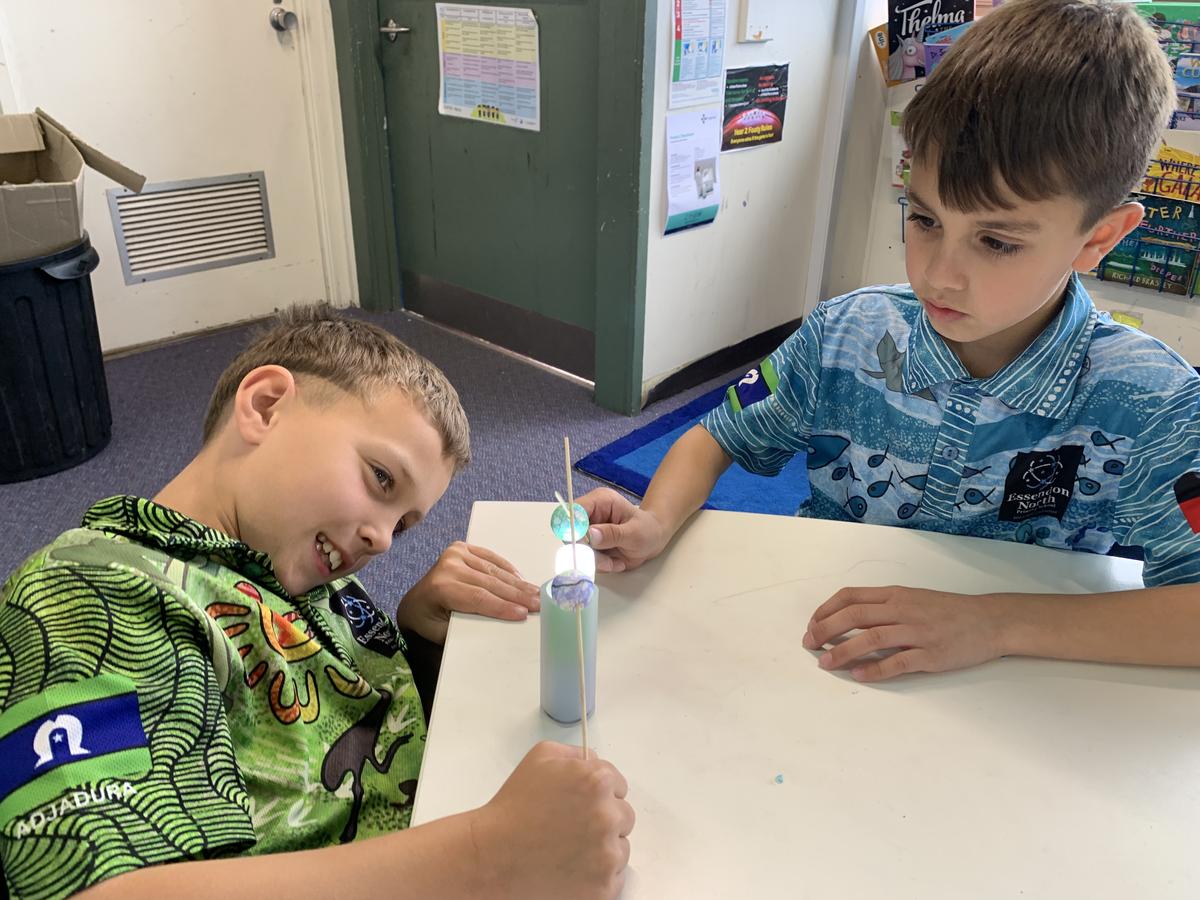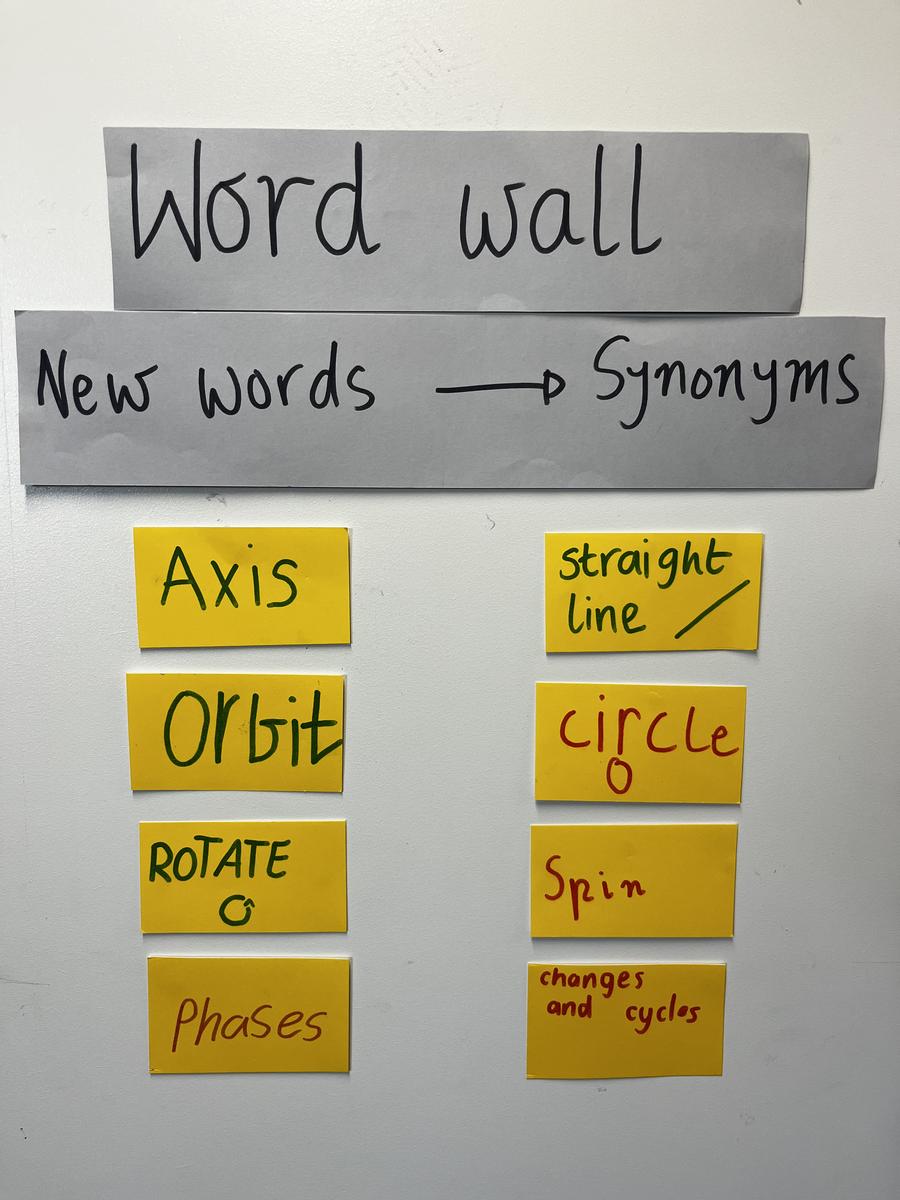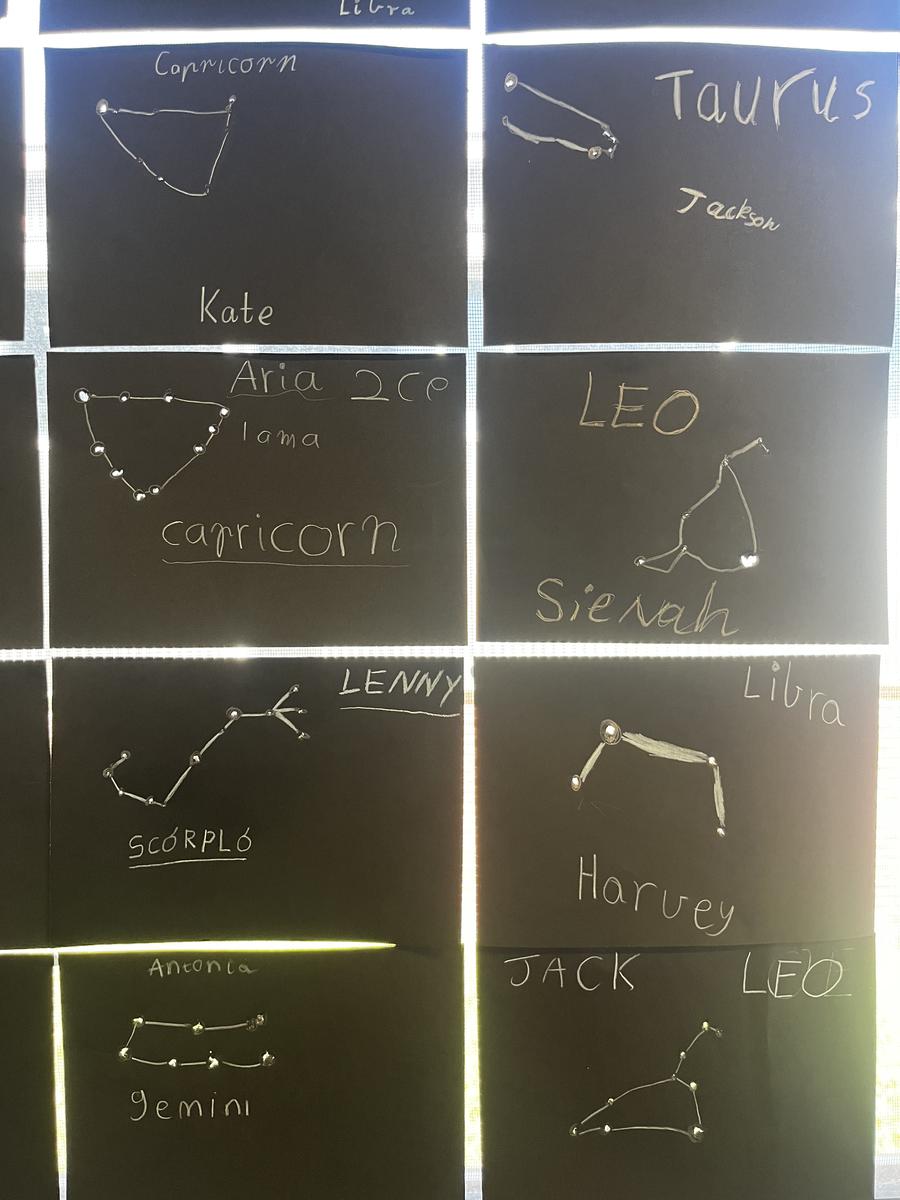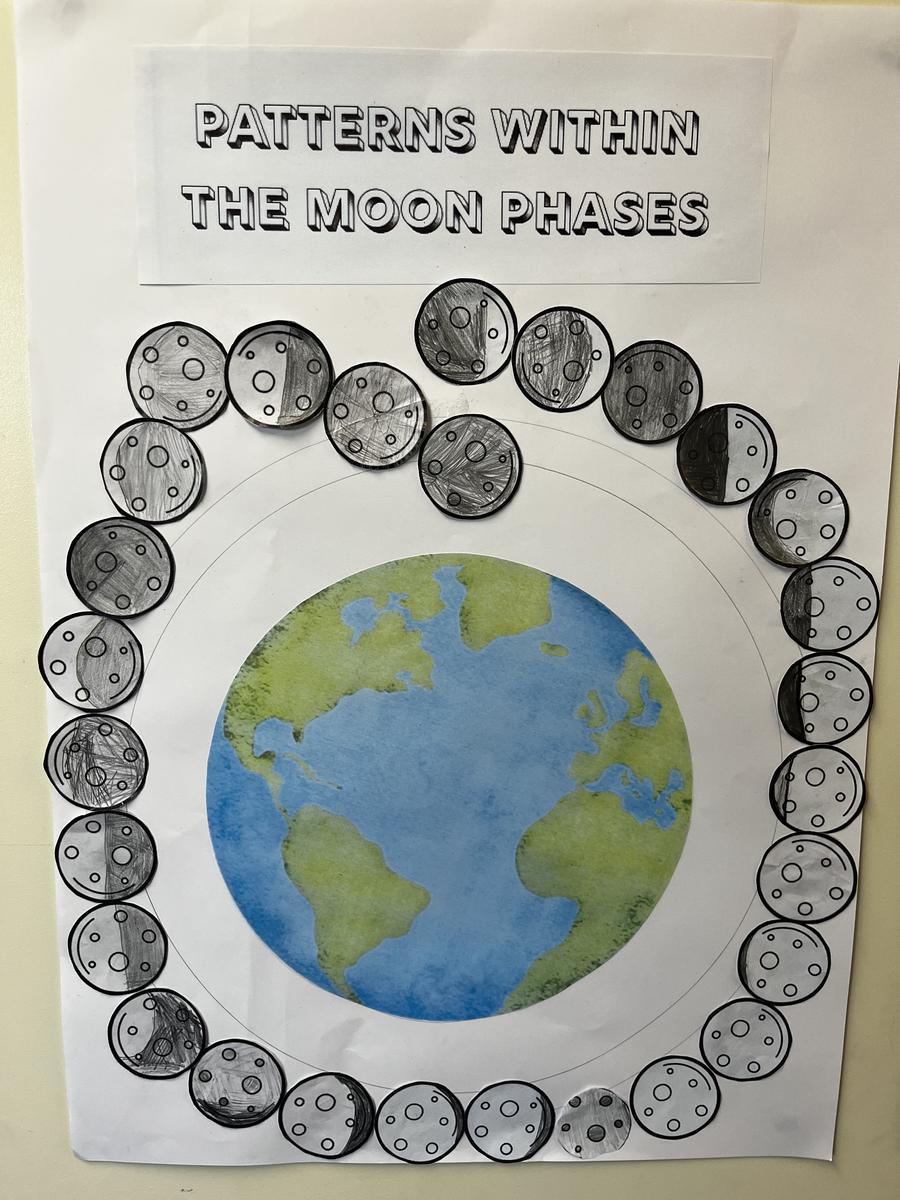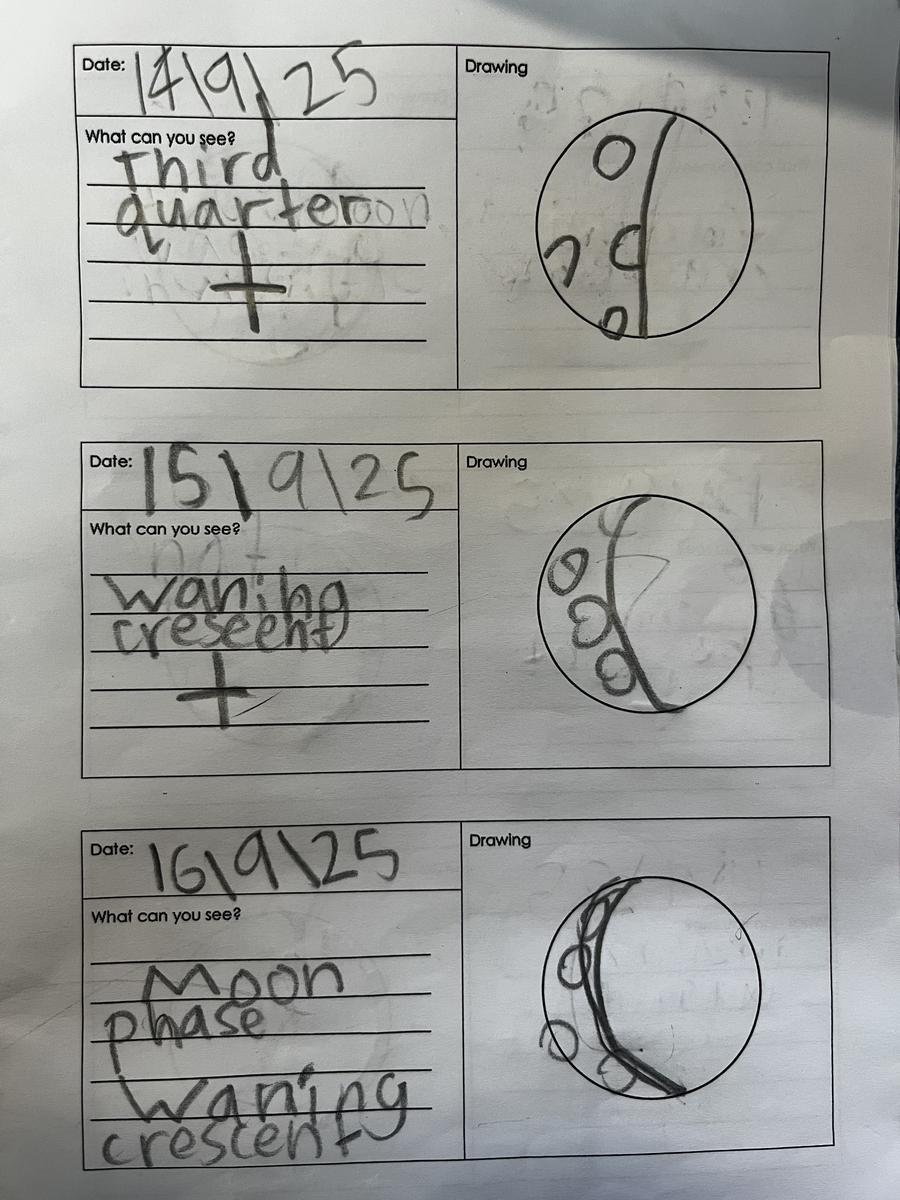Year Two
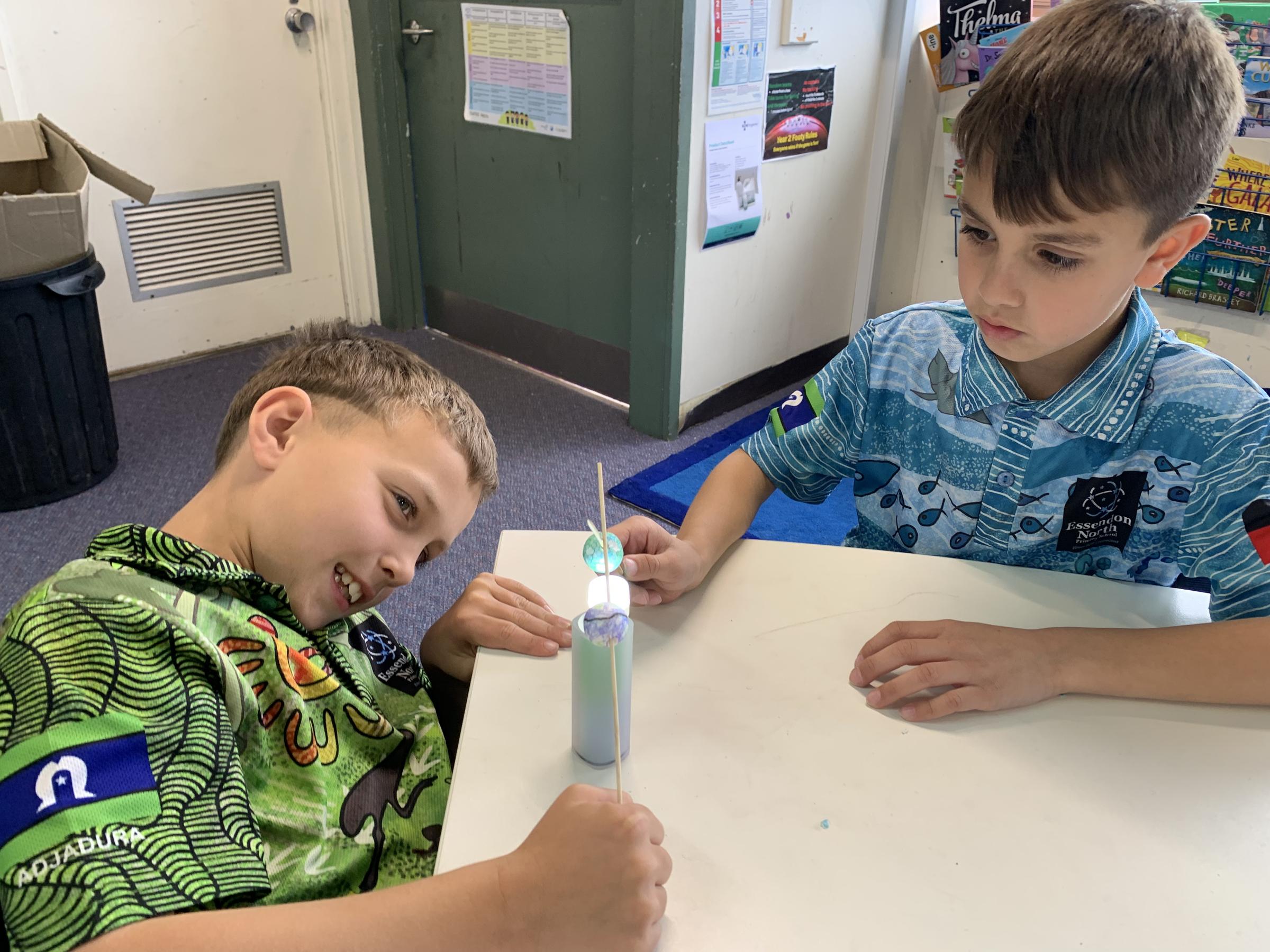
3,2,1, blast off! Make space for the astronauts from Year Two. This unit, we delve into the depths of space. Over the holidays, we began observing the moon at night every night for a month and drew and wrote our findings in our Moon Diaries.
Last week saw us exploring the Earth, moon and the sun through various activities. Using the torch to represent the sun and a foam ball and stick to represent the Earth, we learned how at any single point in time, half the Earth is always lit and the other half is in the shadow. That’s how we have night and day. The next day, by drawing an equator on the foam ball and circling the sun on a tilt, we learned why we have different seasons and why the countries on the equator are hot all year round.
This week, we looked back at our Moon Diaries and began looking for patterns in the moon phases - a link to what we are learning in Maths. We also connected back to the changes between day and night and between the different seasons as naturally-occurring patterns.
To help us with our research skills, we read all about the Earth and the moon in Reading and learned to identify the main points and highlight keywords. In Writing, we learned to write these in bullet points and paraphrase them in our own words. With a few more rounds of practise, we will soon be prepared to research, take notes and write about a whole other planet.
We also asked brilliant questions! Fascinated by what we learned in class, some of us wondered about storms on the sun and in Rigel. A group delved into deep discussion and experimentation about why the north pole is still cold if it experiences summer. Here are some other brilliant wonderings we had: Are we standing sideways because Earth is tilted? How do the seasons make the days longer or shorter? Why is the moon sometimes orange in colour? How did volcanoes appear on the moon? Why did the lava there not just float away into space?
Some even took the extra initiative by researching the answers to our questions at home and shared them with our classmates the next day. Others impressed everyone by sharing how knowledgeable we were about space. Did you know that there are black holes and white holes in space? We knew quite a bit about eclipses, galaxies and the size and number of moons on other planets too.
Needless to say, we are growing as bright young inquirers. Now, we wonder where our learning will take us next? Perhaps one day, we might join the Australian Space Agency and take us far into space.
The Year Two Team
Claire Eadington, Molly Todd, Carole Upton, Laveena Kukanesan and Amy Wirth

